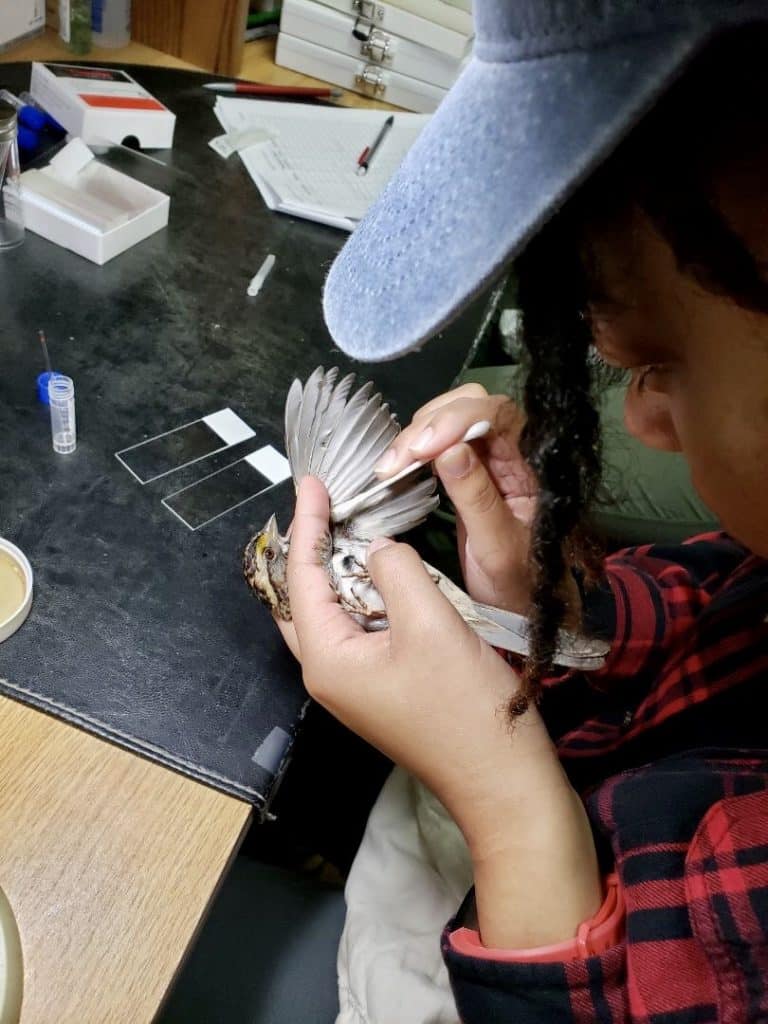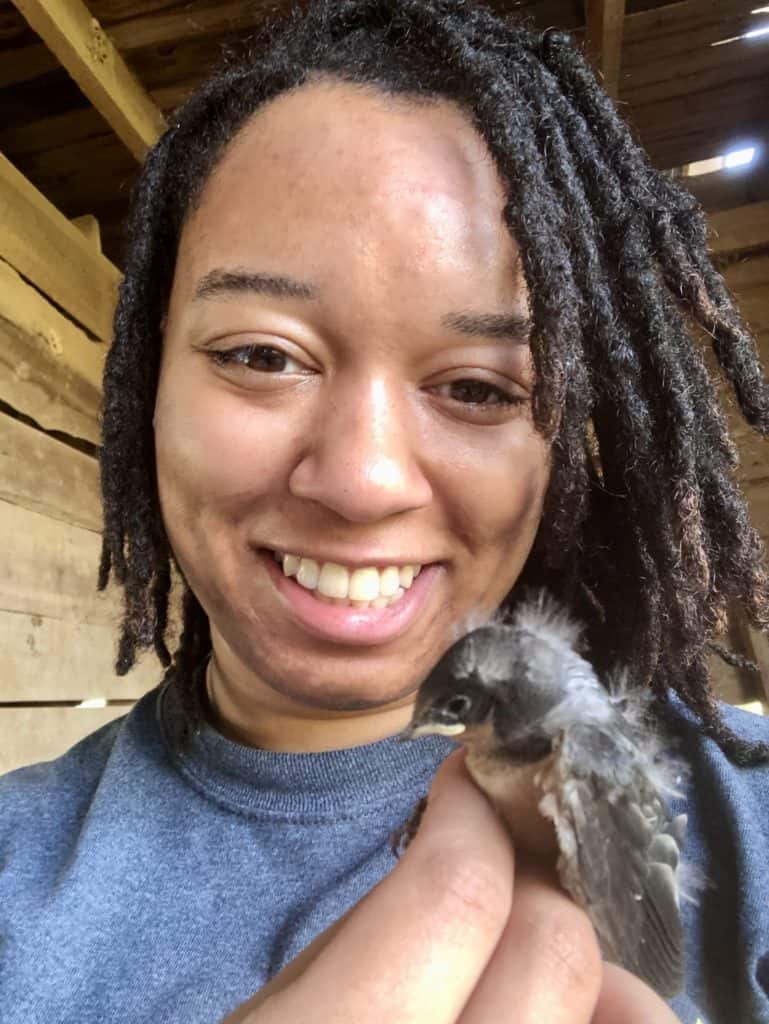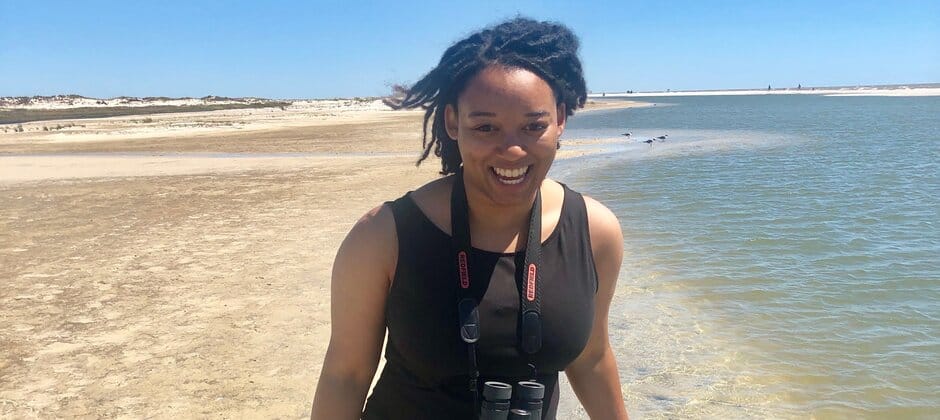Share this article
Wildlife Vocalizations: Murry Burgess
Wildlife Vocalizations is a collection of short personal perspectives from people in the field of wildlife sciences.
The wind beat my face as the skiff skipped across the lagoon. The brightest stars I had ever seen illuminated bats swooping after insects and night herons fishing from the lily pads. I was out on the boat searching for red eyes, the telltale sign of crocodiles, but I was captivated by everything. My captivation brought questions: What constellations am I seeing? How do herons spot fish in the dark? Are the bats catching only certain types of insects?

In the lab, Burgess prepares to take a blood sample from a white-throated sparrow in Oct. 2019. Credit: Lauren Pharr
The child in all of us can relate to asking lots of questions. Sometimes, that child wanted to become a wildlife biologist. For those of us that do, we spend many years cultivating skills necessary to pursue success in this field of study. Knowledge, determination, writing and communication skills … all great qualities for a wildlife biologist to have. But what makes a successful wildlife biologist? Something we’ve had all along: curiosity!
Wildlife biology is all about asking questions and passionately searching for answers to those questions. For example, the simple question “How does light pollution affect birds?” has directed me to interesting studies on circadian rhythm, metabolism, physiology and avian health. I spent this summer in a partially illuminated barn measuring and drawing blood from barn swallow chicks in search of answers to that question. Finding slower growth rates for chicks in the light, I can then ask, “How does light pollution affect protein allocation in the body?” I love how asking questions leads to discoveries and understanding, which can in turn lead to more complex questions. Anyone who follows this scientific cycle can find success.
Curiosity for the natural world is the backbone of this field of study. That’s why I think curiosity is the quality that makes a successful wildlife biologist.

Burgess studies the effects of light pollution on barn swallow (Hirundo rustica) chick health and development in a barn in Snow Camp, NC in June 2020 Credit: Murry Burgess
Learn more about Wildlife Vocalizations, and read other contributions.
Submit your story for Wildlife Vocalizations or share the submission form with your peers and colleagues to encourage them to share their story.
For questions, please contact Jamila Blake.
Header Image: Burgess birds and studies avian coastal ecology at Dauphin Island, Ala. in April 2019. Credit: Carice Godbey








